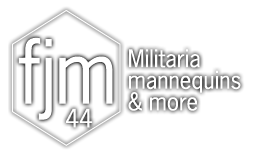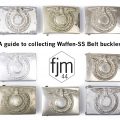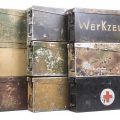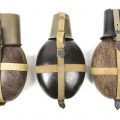Waffen-SS Cufftitle variants and details
04-04-2023

Introduction
One of the most iconic German insignia of the second world war were the Cufftitles or cuffbands of the Waffen-SS. These cuff titles were a indication of the division or regimental name that the wearer served with. The cuff titles or Ärmelstreifen were first introduced with the Allgemeine SS , SS-Verfügungstruppen and Totenkopfverbände. Starting out with 3 regiments, the Waffen-SS eventually had 38 divisions of which many had corresponding cufftitles. There are many more cufftitles that were designed and worn during the war but we will concentrate on the different manufacture variants and design variants at hand. Even if there are 38 SS divisions; most of these divisional cufftitles existed in countless variations. It is not uncommon that due to the attentive eye of a collector another variant gets discovered. Thick or thin lettering, with or without serif, gothic or latin; the variations are countless and for most collectors a endless search for all variants!
Not all divisions or regiments were named or received cufftitles. At the other hand some units had cufftitles but were not allowed to wear them, or they simply never reached the troops. Another interesting fact is that some units had their own cufftitles made as the Reich did not issue them due or the supply was difficult. Many different Belgian and Dutch made variant cufftitles exist because of this fact.
The cufftitle was a black band with white or silver borders, worn on the bottom of the left sleeve. It was to be worn on the field blouse or Feldbluse and the greatcoat or Mantel. It was not allowed to be worn on shirts, camouflage garments and or drill uniforms.
Variants
The Waffen-SS cufftitles were either embroided or woven. Enlisted men and non commissioned officers in wore the cufftitles with white lettering, with two silver borders. Officers wore cufftitles with silver threaded lettering. There are in general two types of cufftitles; embroided and woven. The embroided examples were machine or hand embroided onto a existing black band between 2,5 and 3 cm wide with 6 or 7 silver threads bordering the top and bottom of the lettering. This type is often referred to as the RZM Pattern.
The second type is fully machine woven which is a manufacturing method where the lettering is woven during the manufacturing. Only officer cufftitles of this pattern received silver threaded borders. Most of these cufftitles are referred to as BeVo or BeVo-like pattern.
There are several different variants of we don’t know which manufacturer made them.
Waffen-SS Cufftitles for Enlisted Men and Non Commissioned Officers
RZM Pattern Waffen-SS Cufftitle
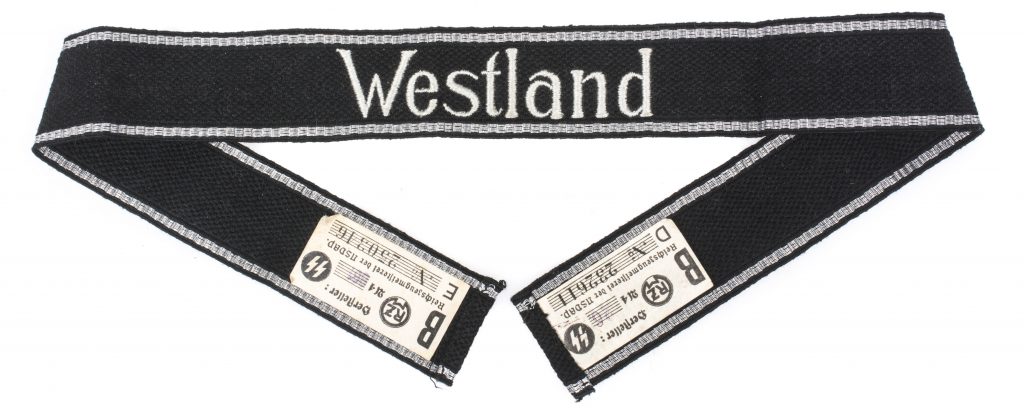
The RZM pattern cufftitles were the first ones introduced with the lettering embroidered straight onto the existing blank cufftitle. Here we can see a typical RZM pattern cufftitle.

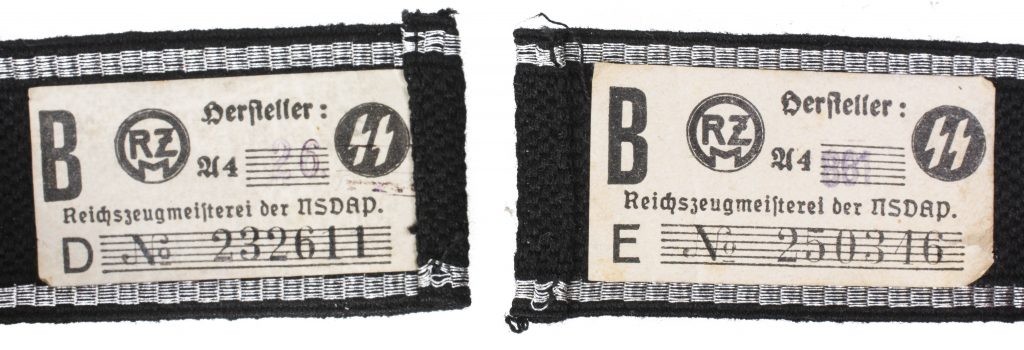
The cufftitle is a typical RZM pattern example with both RZM tags present. Both RZM tags are different. One is the manufacturer of the black base material; the second is that of the manufacturer of the embroidery. There are many different manufacturers of these RZM pattern cufftitles and in theory they could be identified by the individual Hersteller or manufacter codes on the labels. On the left label we can see the number 26, and on the right example we see 861. We know that the embroidery was sometimes done at different facilities because we can encounter cufftitles with one or two rzm labels with different manufacturers and there are also unfinished black cufftitles void of embroidery with a single label.

Another indication for various embroidery facilities is the different font types used. Above we can see two authentic Westland cufftitles yet both have different fonts. There are many neat and often unnoticed variants in this fashion which makes collecting so interesting. The difference in the two cufftitles is in the strong and weak serif of the lettering. This means that the top one has less detailed ends at the corners and lines of the letters.


The emboidery is done in two fases; the base and the finish. The gothic style Deutschland cufftitle above clearly illustrates it; due to heavy wear the top layer of the embroidery wore off and shows the underlaying base. This is a important detail to differentiate most reproductions from originals.

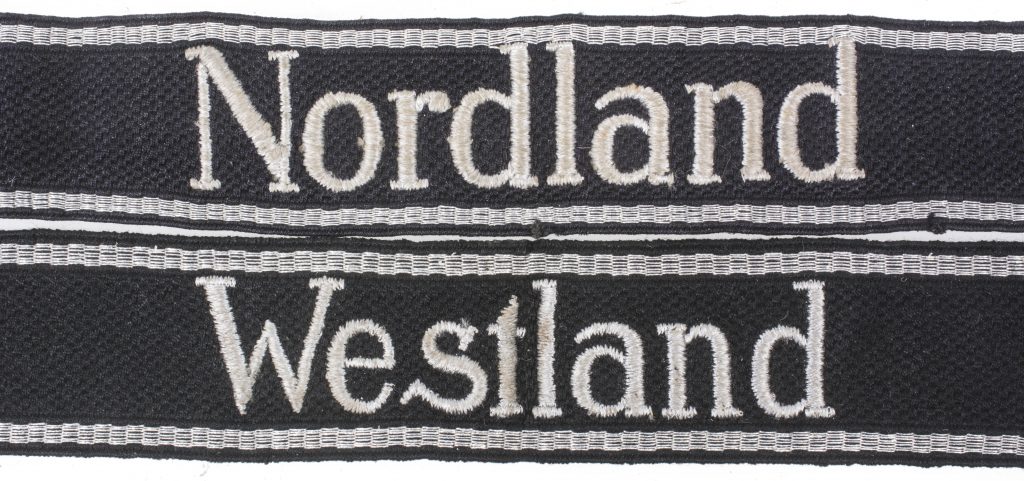
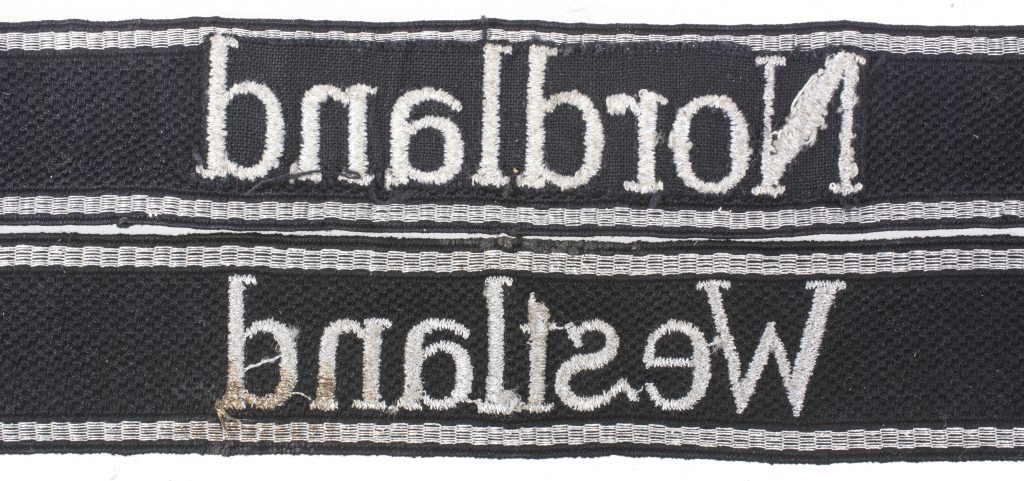
BeVo Waffen-SS cufftitle – the introduction of woven cufftitles

As the war progressed a less intricate manufacturing method was developed further. This method of machine weaving the lettering into the cufftitle was more cost efficient and faster to produce. The cufftitles are easily recognized because of the white ‘salt and pepper’ pattern on the back. These woven cufftitles were probably produced by various manufacturers yet the best known is BeVo indicating production by Bandfabrik Ewald Vorsteher, Wuppertal. The first cufftitles were marked BeVo Wuppertal at the ends; yet at the end of the war this marking and the folded ends were omitted. Although this is often debated; the late war cufftitles such as ‘Nederland‘ and ‘Wallonien‘ never have folded ends or the BeVo marking but are as long as the normal BeVo marked examples.

The lettering in the BeVo cufftitles is always in a spectrum between white and grey. Although the lettering is quite standardized there is a lot of unnoticed variants in this fashion which makes collecting so interesting. The two variants above show a different length in letters and spacing between the words. The colour is also different; the top one is off-white and the bottom is grey.

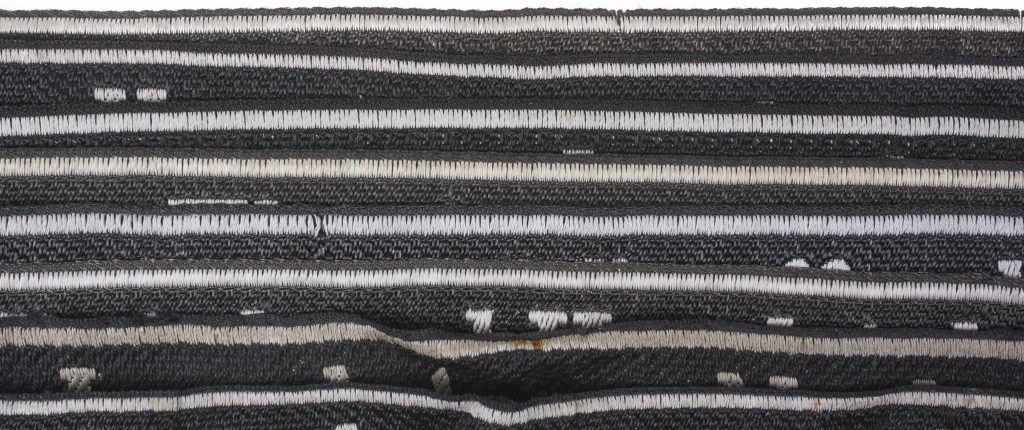
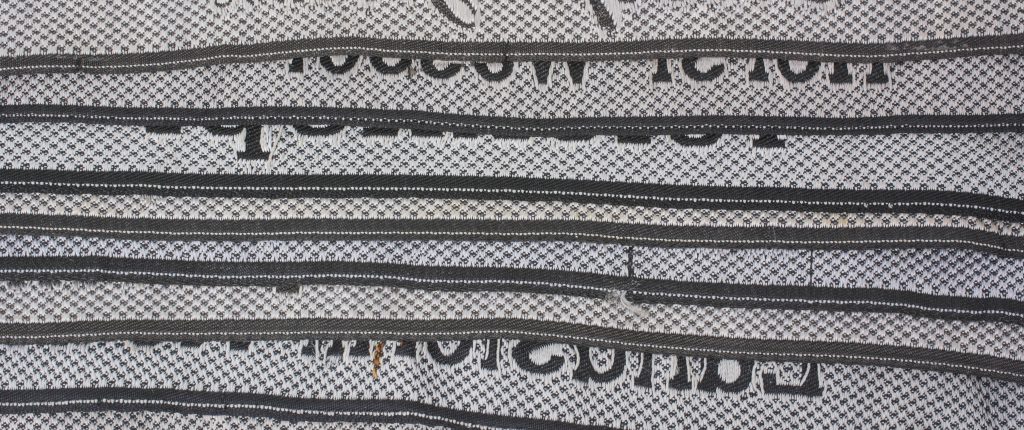
At some point the BeVo cufftitles were simplified by ommitting the markings and finish in the ends of the cufftitle. In stead of the cufftitles being finished with two sewn ends to stop them from fraying. This was also the point when the BeVo Wuppertal marking was no longer included. These late cufftitles are always with frayed ends and in white coloured details.
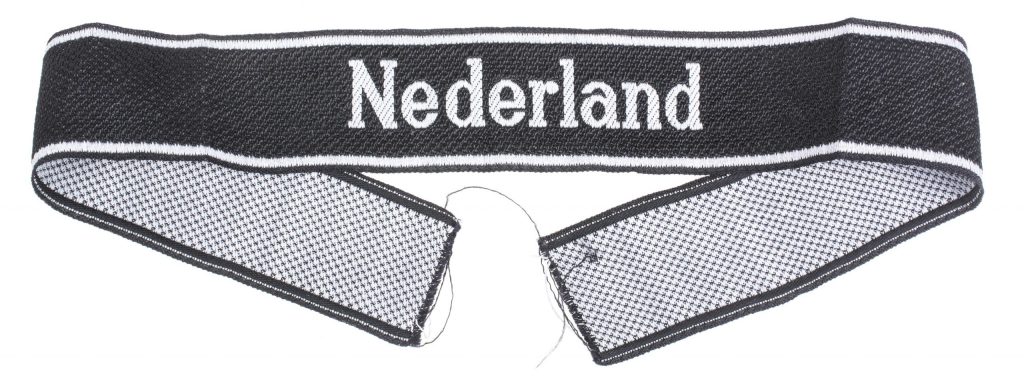
BeVo-Like Waffen-SS Cufftitle
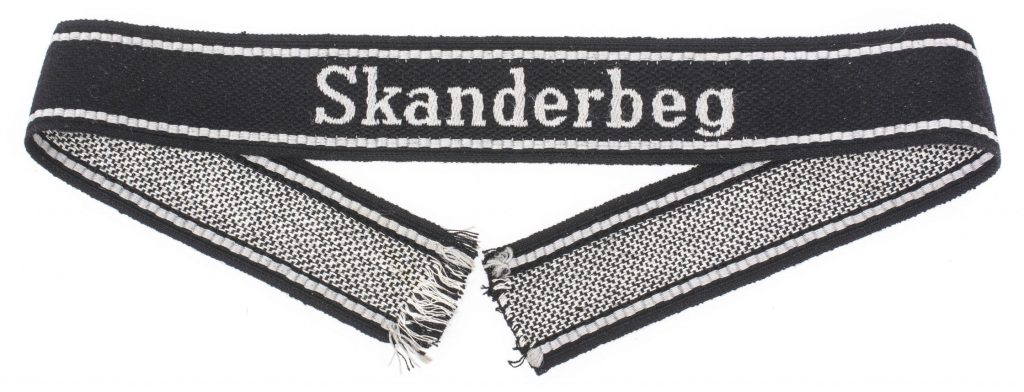
The second pattern is the BeVo-like pattern; this pattern is like the BeVo examples a machine woven product yet still a completely different look and feel. They are thicker and softer to the touch. They are often referred to as BeVo-like because of the similar black and white back but we don’t know who exactly made these. Another difference is the wide black outer borders.


These cufftitles are not marked or dated; we can roughly date them by the units found depicted on them. There are several units that were issued these cufftitles such as Skanderbeg, Horst Wessel, SS-Feldgendarmerie and Wiking. From all these units we know that Skanderbeg was founded March 1944 and was disbanded late 1944 which indicates that these type of cufftitles were produced most probably in 1944 and 1945. Ofcourse they could have in theory started production in 1943, but we know for sure they made them in 1944.
BeVo-like – black back Waffen-SS Cufftitle
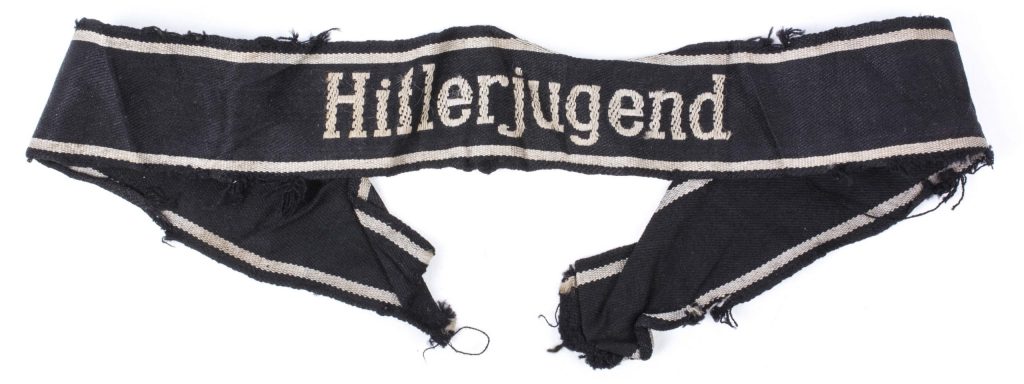
Another machine woven pattern which shows similarities to the BeVo pattern but is completely different. These cufftitles are known to have existed for various units such as Danmark, Norge and Hitlerjugend. They look like a BeVo on the front yet the back is nearly completely void of ‘salt and pepper’ backing. These cufftitles were certainly produced mid to late 1944 as they are the only known factory produced cufftitles for the Hitlerjugend division. A member who received a cufftitle of this division is well known; Otto Funk.
From a interview by my late friend Steve Brindley with Funk in the 1990’s he stated he received the cufftitle in November 1944 as a unit award to be worn by the members of the division that proved themselves in combat and or survived the heavy fightings in Normandy. Otto funk had kept the cuff title since the war’s end together with the document, his belt buckle and some awards. Another source stating this information about the cuff title with the document here.
However interesting; back to some closeups the cufftitle;


Officers Waffen-SS cufftitles
Waffen-SS officers cufftitles come, like the enlisted men examples in many variants. The distinction to the EM/NCO variants is the fact that they are often made with silver thread in the lettering. There are many interesting variants, ranging from RZM to BeVo, BeVo-like and tailor made examples.
RZM embroided bullion officers Waffen-SS Cufftitle

The RZM embroided cufftitle is typically made like the enlisted mens variant with a sole distinction being the lettering hand embroided in silver thread.


RZM Flatwire Waffen-SS Cufftitle

Allthough this cufftitle looks a lot like a standard embroided RZM type cufftitle it is actually a machine woven example. These cufftitles are often referred to as flatwire cufftitles. These cufftitles often come with RZM tags so I don’t have a problem referring to it as a RZM Flatwire cufftitle.


Below we have a great closeup which shows the recess around the letters enabling the fine woven flatwire not to bulge the cufftitle.

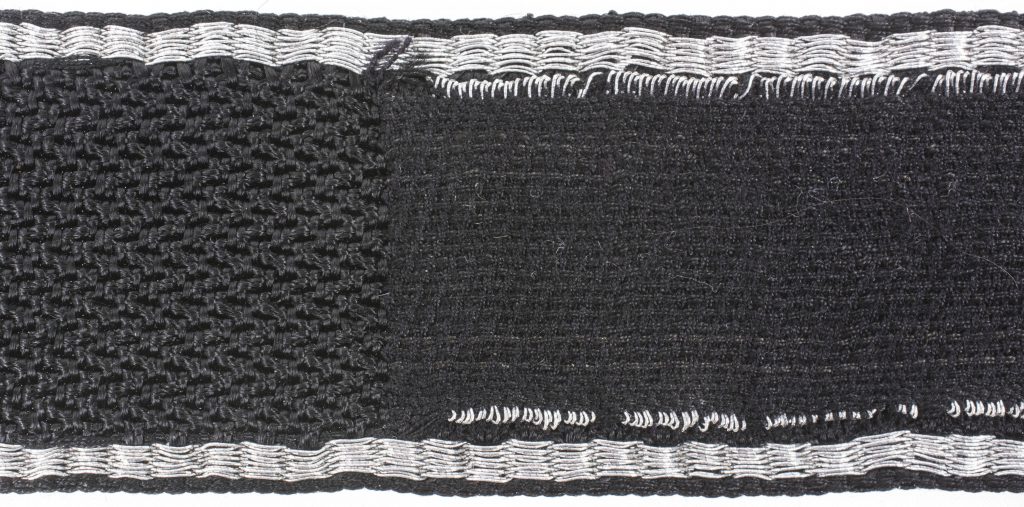
BeVo Flatwire Waffen-SS Cufftitle
Another interesting and as far as I know unique example is this BeVo cufftitle for Landstorm Nederland. Although it looks like a standard BeVo example this one is made with silver thread.




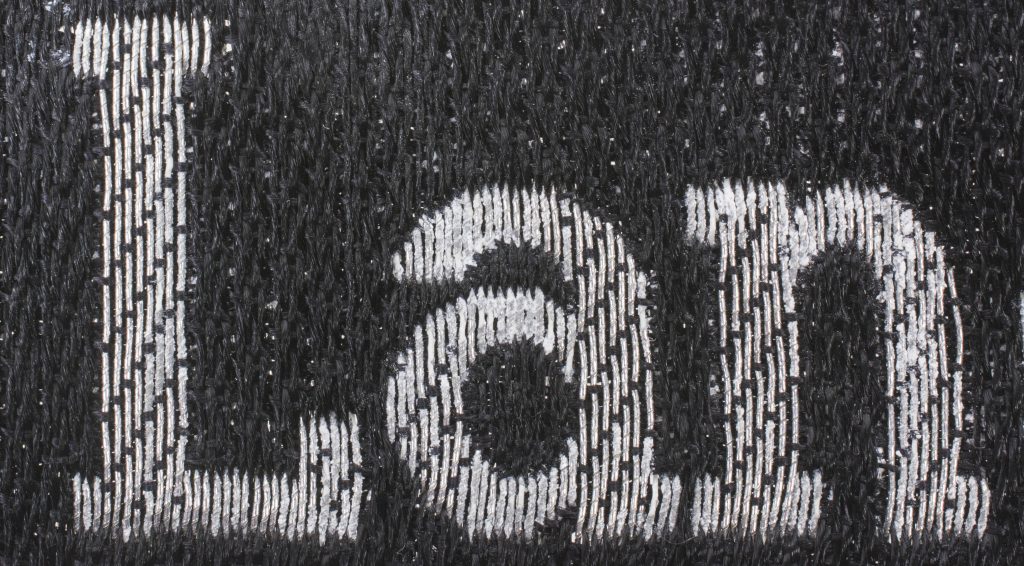
BeVo-like Flatwire Waffen-SS Cufftitle
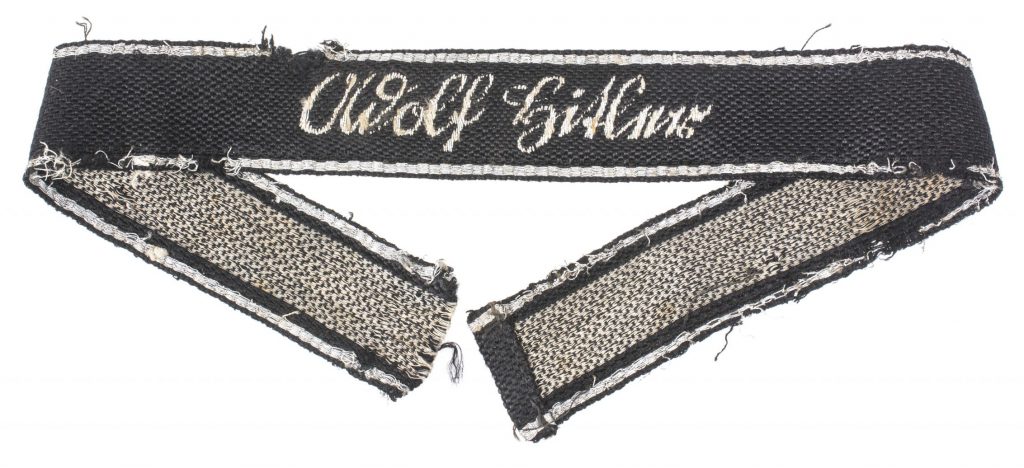
Another interesting cufftitle is the BeVo-like variant. It is very similar to the BeVo-Like examples but it has silver flatwire lettering.


As like the RZM flatwire variant it has a backing material to protect the fine flatwire weave on the back. Unlike the normal BeVo-like the borders are also made in silver thread.
BeVo-Like – full rayon Waffen-SS Cufftitle
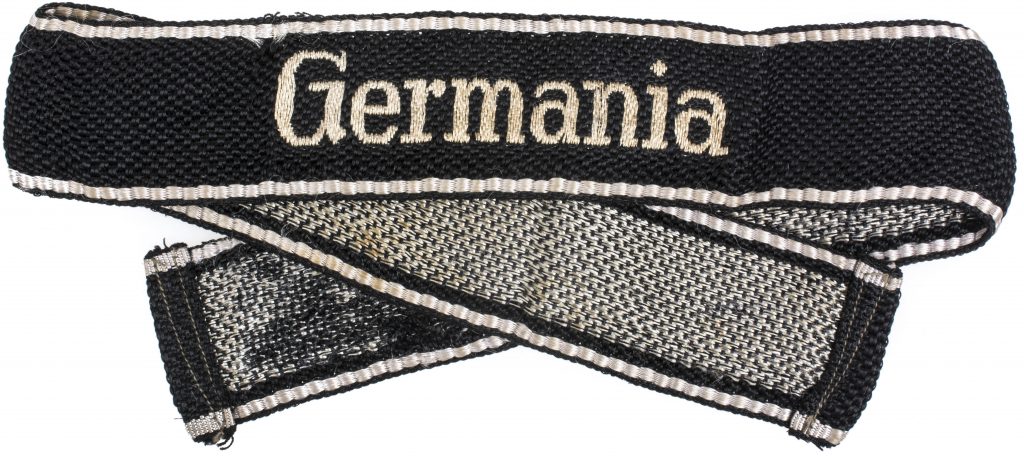
A variant to the BeVo-like cufftitle is made in full rayon construction; void of flatwire thread. These cuff titles are rare to find and otherwise identical to the Bevo-Like flatwire cuff titles. The lettering has a nice blacking material.



Flemish made Waffen-SS cufftitle
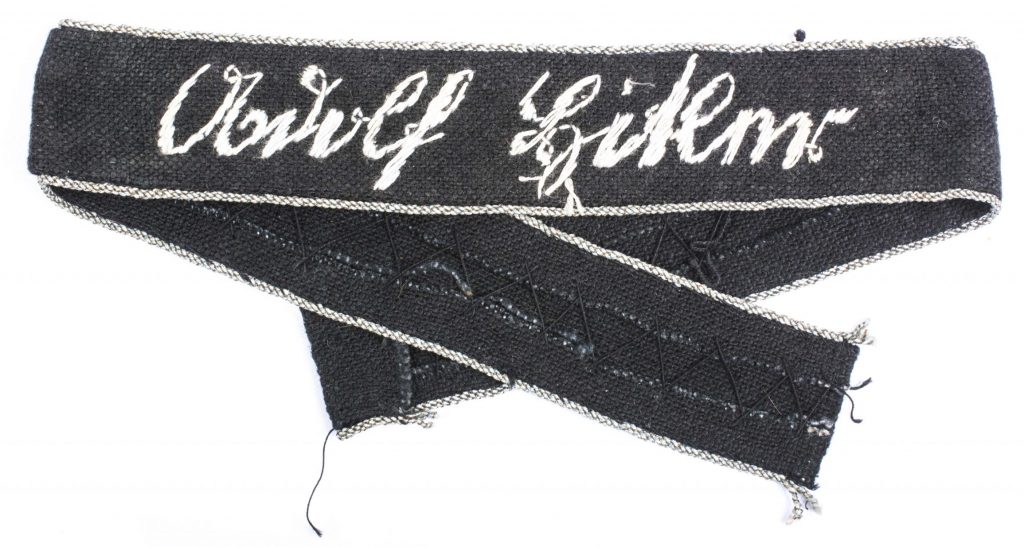
A custom hand embroided Waffen-SS cufftitle made in Belgium. This cufftitle is crudely made and unlike most of the other Waffen-SS cufftitles has white lettering. The only silver threaded details on the cufftitle the bullion sewn onto the edge. The main material is not band material and comes without selvedges so it is folded and sewn shut on the back. The letters are hand embroided with a cardboard or hessian backing material sewn inside the cufftitle. It is without a doubt one of the crudest yet authentic examples made during the war. This one would not pass the RZM standard, yet it was worn!

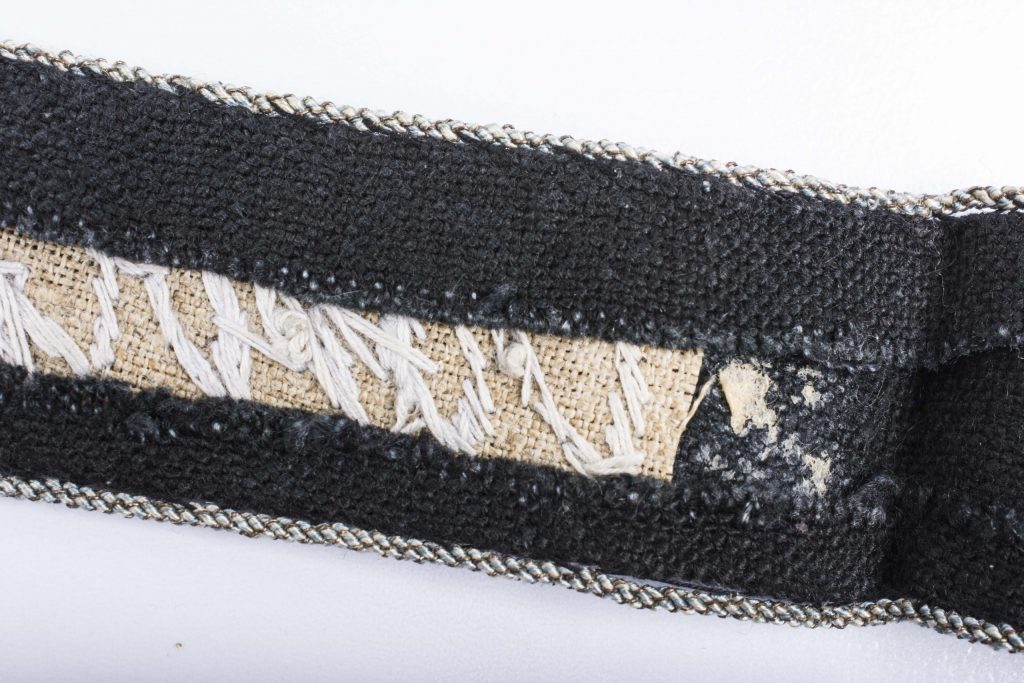
Hand embroided Dutch made Waffen-SS Cufftitle
Another interesting yet crudely made variant is this Dutch made officers Cufftitle for the Freiwilligen legion Niederlande. The letters are hand embroided with thick bullion onto a standard blank RZM cufftitle. The backing is a blue cotton which is most probably lining material used for Dutch tunics and trousers.





Dutch made cufftitle variants
Below are three different Dutch made cufftitles for the Landwacht Nederland which was a paramilitary organization in the Netherlands. It consisted of volunteers of mostly NSB members which acted as a auxiliary police force. They did not wear a uniform initially, but were initially identified by a red armband. Later they were issued with uniforms and weapons by the Germans. Their task consisted mainly to guard buildings, check identity cards, and carry out arrests, house searches, and raids.
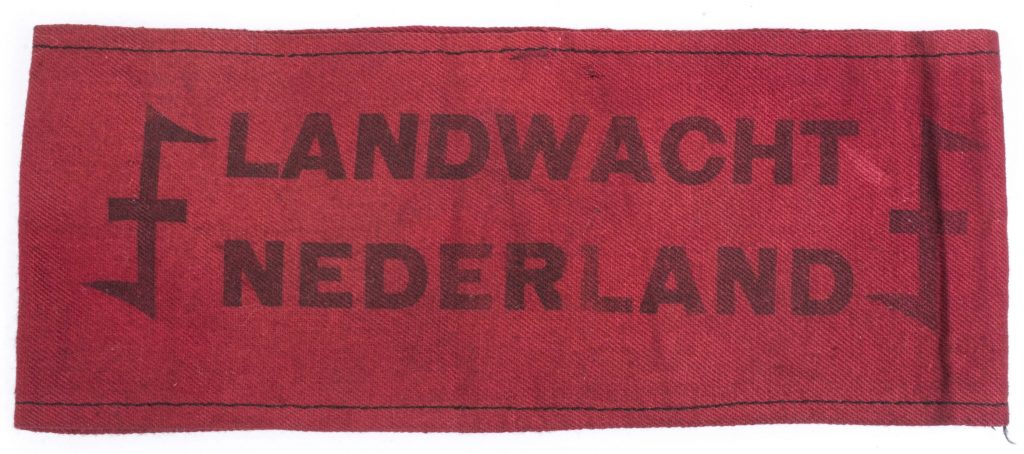
Later they were issued with Waffen-SS RZM– and BeVo style cufftitles. Unlike the RZM the Dutch examples did not have such high standards and a lot of uncanny variants can be found. Although these below are not specific Waffen-SS issue; some of these variants can also be found in the variation of Landstorm Nederland which in term was a Waffen-SS division and as such interesting for the reference.
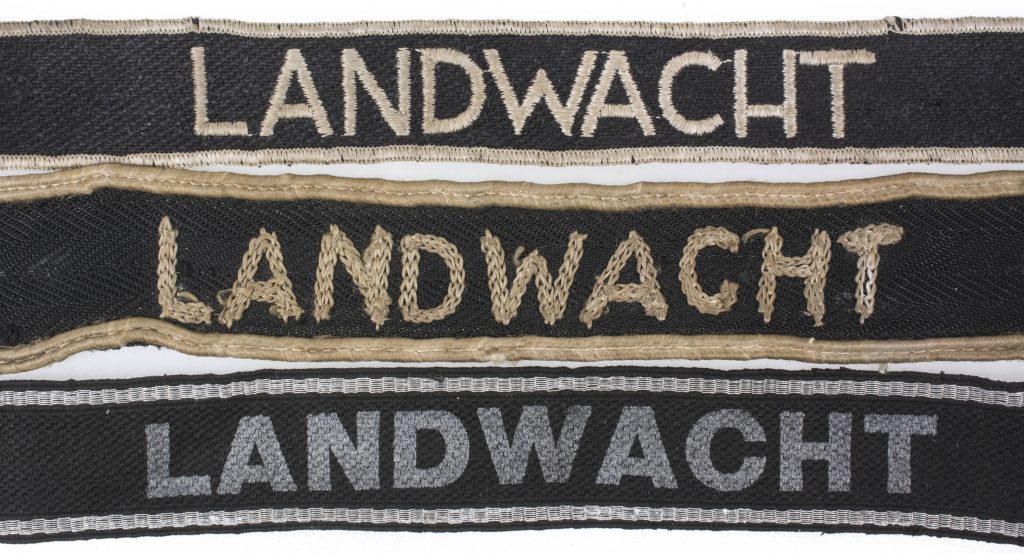

End;
Even though this article only covers a number of known original SS cufftitles it does cover the basics for most collectors. Because I do not have the access to all known variants I can not do every variant per division. Halfway when I wrote this article I stumbled upon a two volume reference on third reich SS and Political cufftitles that I would warmly recommend to any collector of Waffen-SS insignia. It covers most known manufacture and unit variants.
The book Collecting Third Reich SS & Political cuffbands by Ulric of England comes in two volumes. Whilst its photographs are in black and white it gives a very good insight and should therefor be in any collectors book cabinet. The books can be purchased here.
Other sources;
A comprehensive list of approximately 120 known original SS cuff titles; Wehrmacht-Awards forum
